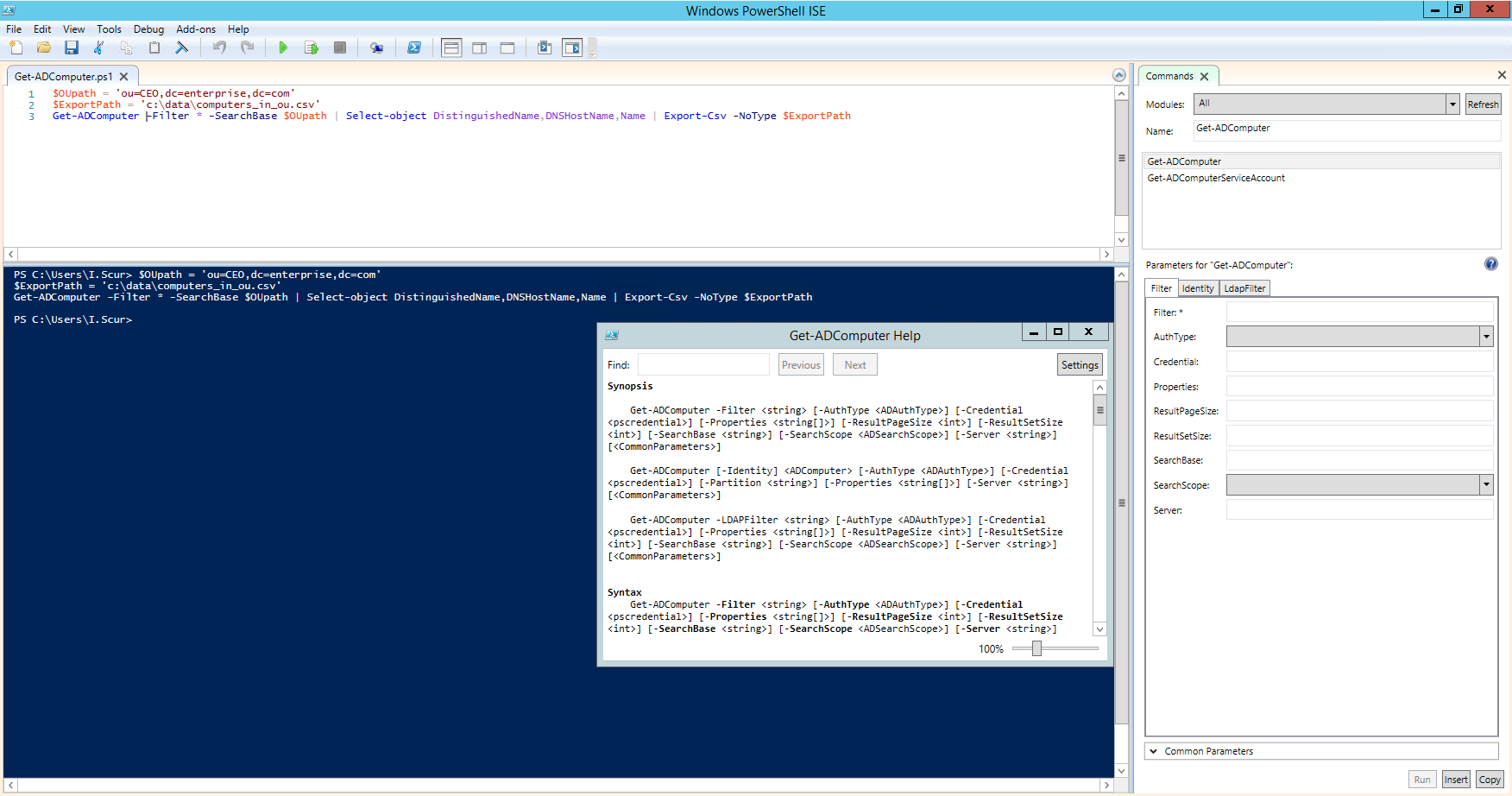Windows PowerShell ISE. The Microsoft Windows PowerShell ISE is a graphical user interface-based application and a default editor for Windows PowerShell. ISE stands for the Integrated Scripting Environment. It is an interface in which we can run commands and write, test, and debug PowerShell scripts without writing all the commands in the command-line interface. Whether you're a developer or an it pro, you definitely have to deal with Powershell sometimes. Tagged with vscode, powershell, productivity. Technical articles, content and resources for IT Professionals working in Microsoft technologies.
Using Vim with and to write PowerShell!
Not as good as VSCode
When it comes to writing large PowerShell scripts, VSCode is plain better, thanks to Microsoft’s extension for PowerShell (there are extensions to emulate Vi key bindings too). To be honest, the PowerShell ISE is also a better bet. But! There are some cases where it can make sense to use Vim, mostly when you want to quickly write a short script or make a small change to a pre-existing script. Vim launches faster than VSCode (not that VSCode is at all slow) and, provided you know the correct key bindings, can often be quicker to perform the edit with. Or maybe you just like using Vim!
Neovim
If you’re wanting to use Vim to write PowerShell, even with the introduction of cross-platform PowerShell core, chances are you’re on Windows. If that’s the case I recommend using Neovim with the Neovim-Qt GUI. Using a GUI just feels more natural on Windows and Neovim-Qt is cleaner out-of-the-box than gVim. I’ve also run into fewer problems running Neovim than I have with Vim when on Windows.
Windows clipboard
To get Ctrlc/v copy/paste working for Neovim-Qt when in insert mode just add source $VIMRUNTIME/mswin.vim to your vimrc file.
On Windows, Neovim’s vimrc file is located at %USERPROFILE%AppDataLocalnviminit.vim.
Setting Posh as Vim’s shell
By default, shell commands use cmd.exe, to use PowerShell instead just add the following snippet to your vimrc file.

Adding -NoProfile when setting shellcmdflag stops PowerShell from loading your profile every time you run a shell command from Vim, e.g. :!ls, but still loads it when creating a Neovim terminal buffer, :terminal.
ps1.vim
To add syntax highlighting, I use this plugin. It does what it says on the tin! I recommend using vim-plug for managing plugins if you’re not using something already.

Powershell Ise
Abbreviations
It’s good practice to use a cmdlet’s full name when writing PowerShell scripts so I like to set up abbreviations for my most frequently used aliases e.g.
Since abbreviations activate just the same when writing comments or strings (you might not want them to), I avoid setting them for cmdlet aliases that I rarely use.
Reuse
As I don’t want these abbreviations when using vim for anything but PowerShell I put them in ftpluginps1_ab.vim instead of my vimrc file. They are then only loaded when the filetype is ‘ps1’. Because I have ps1.vim installed (see above) the abbreviations will be picked up for other PowerShell file extensions too, e.g. .psm1.
For the sake of using vim-plug to manage ps1_ab.vim, I keep it in a Git repository and just add Plug 'robin1996/posh-ab' to my vimrc file.